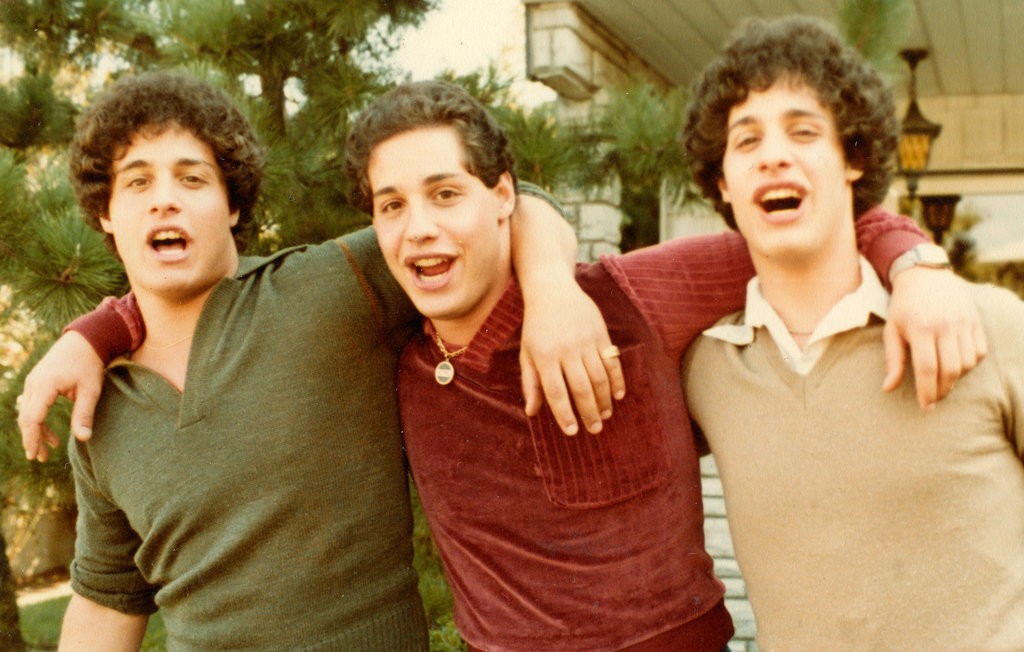
The beauty of Tim Wardle’s Three Identical Strangers is this: It not only has a wildly improbable and fascinating story to tell, it has wonderful characters to tell it.
Here’s the story: An adopted young man named Robert Shafran turns up the first day of college and is greeted like an old friend—slaps on the back from the boys, kisses from the girls—by complete strangers. Shafran thinks he must have a lookalike, but it’s much more than that: He has a twin, Eddie Galland, from whom he was separated at birth. The two boys meet and have their incredible story chronicled by the local newspaper. It’s at that point that a friend of another 19-year-old boy—David Kellman—sees the photo and freaks out. You guessed it. These boys aren’t just twins, they’re triplets.
The three boys—all of whom were raised by Jewish families in the suburbs of New York City—meet and are instantly inseparable. They marvel at their similarities, in not just appearance, but mannerisms, hobbies (all three were high school wrestlers), and taste in food and women. Suddenly, they’re all over TV and the newspapers: The Today Show, The Phil Donahue Show, People magazine. It was 1980 in New York and the boys—who were all handsome with mops of curly dark hair and infectious, toothy grins—became the toast of the town, getting red rope treatment at nightclubs like Studio 54 and The Limelight. They were loving the ride, but their adopted parents—none of whom had been informed that they were breaking up infant brothers—demanded answers. From there, the film goes down some deeply disturbing paths as it explores nature vs. nurture, separation anxiety, the legacy of mental illness, and ethics in psychiatry.
Now, about those characters. Two of the three brothers—Robert and David—now in their late 50s, are interviewed in the film and they are wonderful storytellers: funny, garrulous, emotionally accessible, and blessed with apparently great memories. The filmmakers also have a veritable treasure trove of documentary footage and photos to share, considering that the boys became minor celebs. As the film goes on—and explores more of what happened to the boys and why they were separated—it gets darker and darker. But the film’s greatest strength—that it’s a helluva yarn—is also its biggest weakness. Wardle sacrifices some of the film’s more intriguing and thornier themes in favor of a compelling, shocking narrative. I also had a bit of a problem with the highly subjective nature of his lens. Film, as you know, can be a sneakily persuasive medium. The way characters are filmed and how they are edited affects our perception of them—and I felt that Wardle indicted some of the characters a little irresponsibly. (One interview subject is filmed at grotesque angles; another one is essentially blamed for a tragic event through narrative juxtaposition.)
The less you know about Three Identical Strangers going in the better. It’s utterly captivating—an OMG story that truly has to be seen to be believed—but I do wish it had dug just a bit deeper.
Three Identical Strangers is now playing the Senator Theatre
